What Are Replacement Storm Windows?
Replacement storm windows are installed over a home’s existing windows to provide extra protection from harsh weather and improve energy efficiency. Homeowners with older or historic properties often choose storm windows to preserve the original architecture while meeting strict community design guidelines.
Where Are Storm Windows Installed?
Storm windows are easy to install on nearly any type of residential window. Most are installed on the home’s exterior and are available in both operable and fixed designs. You can also purchase interior storm windows, which offer increased insulation and energy efficiency. However, they don’t protect the window from outside damage since they sit inside the home.
Storm windows are a cost-effective alternative to full window replacement, especially for single-pane windows. They are durable, energy-efficient, and often more affordable than complete window replacements.
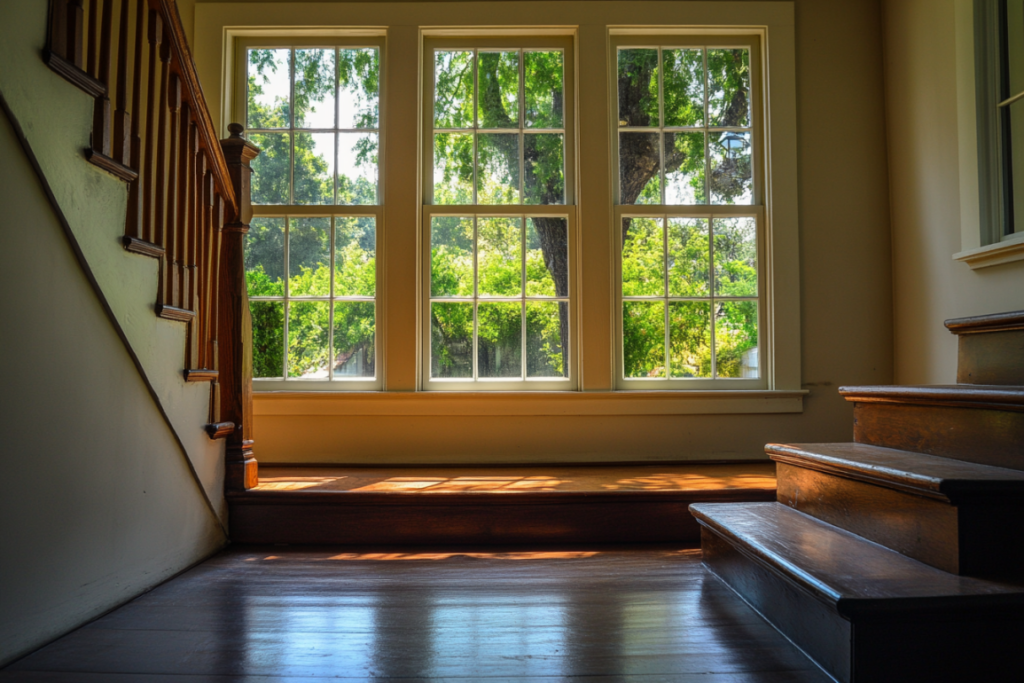
How Do They Operate?
Storm windows come in both fixed and operable styles. A standard design features a double track: the outer track holds a glass pane and screen, while the inner track has a movable glass panel for ventilation. Triple-track storm windows are ideal for preserving the functionality of double-hung windows. These include two operable glass panes and a screen, each on its own track, allowing you to open the window from the top or bottom.
Storm Window Replacement Costs
Adding storm windows can improve a home’s energy efficiency without the higher costs of replacing existing windows. The average cost to install a storm window is $150 to $350. For comparison, single-hung window replacement costs range from $400 to $900, and a double-hung window from $450 to $950.
While storm window installation is a popular DIY home improvement project, it requires precise measuring and drilling into your home’s window frame. A professional window installer can ensure a proper fit, and the average labor cost per window ranges from $75 to $175.
Storm Window Price Tiers
| Price Tier | Total Cost Installed | Labor Cost Per Unit | Material Cost |
|---|---|---|---|
| Low-end/basic | $95 to $200 | $60 to $100 | $35 to $100 |
| Typical range | $172 to $320 | $70 to $120 | $100 to $200 |
| High-end/custom | $321 to $415+ | $100 to $160 | $200 to $300+ |
Factors That Affect Your Costs
Many factors influence how much you’ll pay for a storm window:
- Size: Larger or custom-sized storm windows increase the overall cost.
- Type: Triple-track windows cost more due to added functionality.
- Material: Aluminum and standard glass are the most affordable options.
- Installation Costs: Labor rates vary by region. Most fall between $70 and $175 per window.
Despite their low upfront cost, storm windows offer long-term benefits and are widely considered a smart investment by window professionals.

Types of Storm Windows
Storm windows come in several styles to meet different home and performance needs.
Exterior
These are mounted outside your existing windows and may be fixed or operable.
- Two-Track: One glass panel and screen, with a second pane that slides vertically.
- Three-Track: Two glass panels and a screen on separate tracks. Offers flexibility for airflow at the top or bottom.
- Basement Storm Window: A small, fixed window with a latch, often used in basements.
Interior
Interior replacement storm windows focus on insulation. They attach with magnets, pressure-fit frames, or clips, offering a discreet solution that doesn’t alter your exterior curb appeal.
Disposable
Sold as kits, these feature plastic sheeting and framing strips. They’re a temporary, budget-friendly way to reduce drafts.
Storm Window Materials
Frame options typically include:
- Aluminum: Lightweight, affordable, and resistant to corrosion.
- Wood: Offers a traditional look and better insulation but requires regular maintenance.
Glass options:
- Standard Glass: Affordable and widely available.
- Low-E Glass: Features a transparent coating that reflects heat. It’s ideal for energy savings in both summer and winter.
Benefits of Installing Storm Windows
- Weather Protection: Storm windows act as a protective barrier against rain, wind, and debris.
- Reduced Energy Bills: By minimizing air leakage, storm windows reduce heating and cooling costs. Homes with storm windows over single-pane windows can save up to $350 annually.
- Noise Control: They dampen outdoor noise — a plus for homes near roads or busy neighborhoods.
- Cost-Effective Alternative: If your current windows are structurally sound, replacement storm windows offer a high-impact upgrade at a fraction of the cost of full replacements.
How to Install Storm Windows
Exterior Installation
- Clean the existing window and make any necessary repairs.
- Dry-fit the storm window to check for proper alignment.
- Apply caulk to the top and sides of the back frame (leave the bottom unsealed for drainage).
- Position and screw the storm window into place.
- Adjust the expander to seal against the sill.
Interior Installation
Interior storm windows often use a magnetic or compression fit. Measure carefully for a snug fit and follow the manufacturer’s instructions.
Though this project is DIY-friendly, professional installation is often a better choice for larger projects or hard-to-reach areas. Contractors ensure a proper fit and long-lasting performance.
What to Consider Before Buying Storm Windows
- Brand and Warranty: Leading window manufacturers like Pella, Marvin, Simonton, and Renewal by Andersen all offer storm window lines. Warranty terms vary, so review coverage before purchase.
- Energy Efficiency: Low-E glass adds insulation and boosts efficiency. This is especially helpful in older homes with single-pane windows.
- Climate Suitability: Choose aluminum frames for wet or coastal climates. They’ll resist corrosion better than other materials.
- Lifespan: Aluminum storm windows can last 30+ years. Wood frames may last even longer with proper maintenance.
- Maintenance: Windows with more parts (like triple-track models) take longer to clean and may require more upkeep over time.

Finding Storm Window Installers
If you’d prefer professional replacement storm window installation, use the below project calculator. It’ll estimate your costs and match you with local pros. Installing storm windows can be a simple DIY job. However, getting it done right the first time ensures better protection and performance for years to come.

FAQ
The main difference between the two window types is the amount of protection they offer. Both increase your home’s energy efficiency, but only exterior storm windows protect your existing windows from the elements.
Storm windows vary in operation and materials. Models come with glass panels that open up and down or to the side to accommodate single or double hung windows, sliding windows, and basement or picture windows.
For homes with standard single pane windows, storm windows can improve energy efficiency and save approximately $350 annually on energy costs.
Storm windows installed over standard single pane windows offer similar energy-saving benefits to double pane windows.
It depends on the condition of your existing windows. If your windows are in decent shape, adding storm windows can be a cost-effective project that offers increased protection and improves your home’s energy efficiency.
While storm windows and hurricane windows are often used interchangeably, they are not the same. Hurricane windows are constructed with laminated glass to better withstand impacts and high winds from powerful storms.
ENERGY STAR® certified storm windows must comply with the program’s specifications and requirements.
-
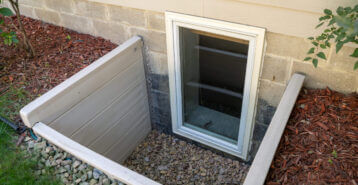
Egress Window Guide
What Is an Egress Window? An egress window is a window specifically designed to provide a safe and accessible exit from a home during an emergency, such as a fire... -
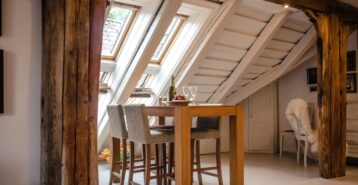
Skylight Window Guide
Considering a skylight for your home? These popular windows can increase your home value and decrease your utility bills. From what they are to types available to the best rooms... -
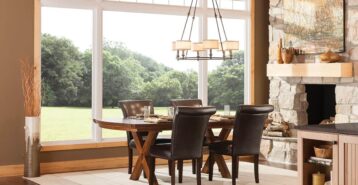
Picture Windows Guide
What Are Picture Windows? Picture windows are large windows made of a single glass pane that isn’t broken up by any lines and can’t be opened. They’re usually found in... -
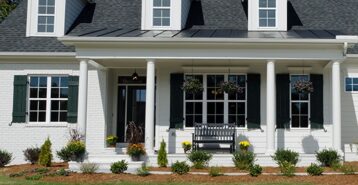
Double-Hung Windows Guide
What Is a Double-Hung Window? Replacement double-hung windows share many similarities with single-hung windows, with one key difference. With a single-hung window, the bottom sash is moveable. It raises up and... -
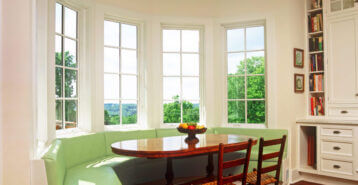
Bay Windows Replacement Guide
What Are Bay Windows? Bay windows are made from three angled panels that protrude outward from the exterior of the home. In addition to creating architectural interest on the outside,... -
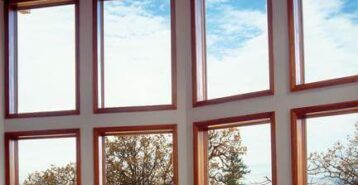
Custom Windows: Costs and Benefits
Custom Windows: Costs, Options, and Unique Shapes Discover custom windows designed to fit non-standard openings, offering unique shapes and styles like ellipses, circles, hexagons, arches, and more. Delve into the...
